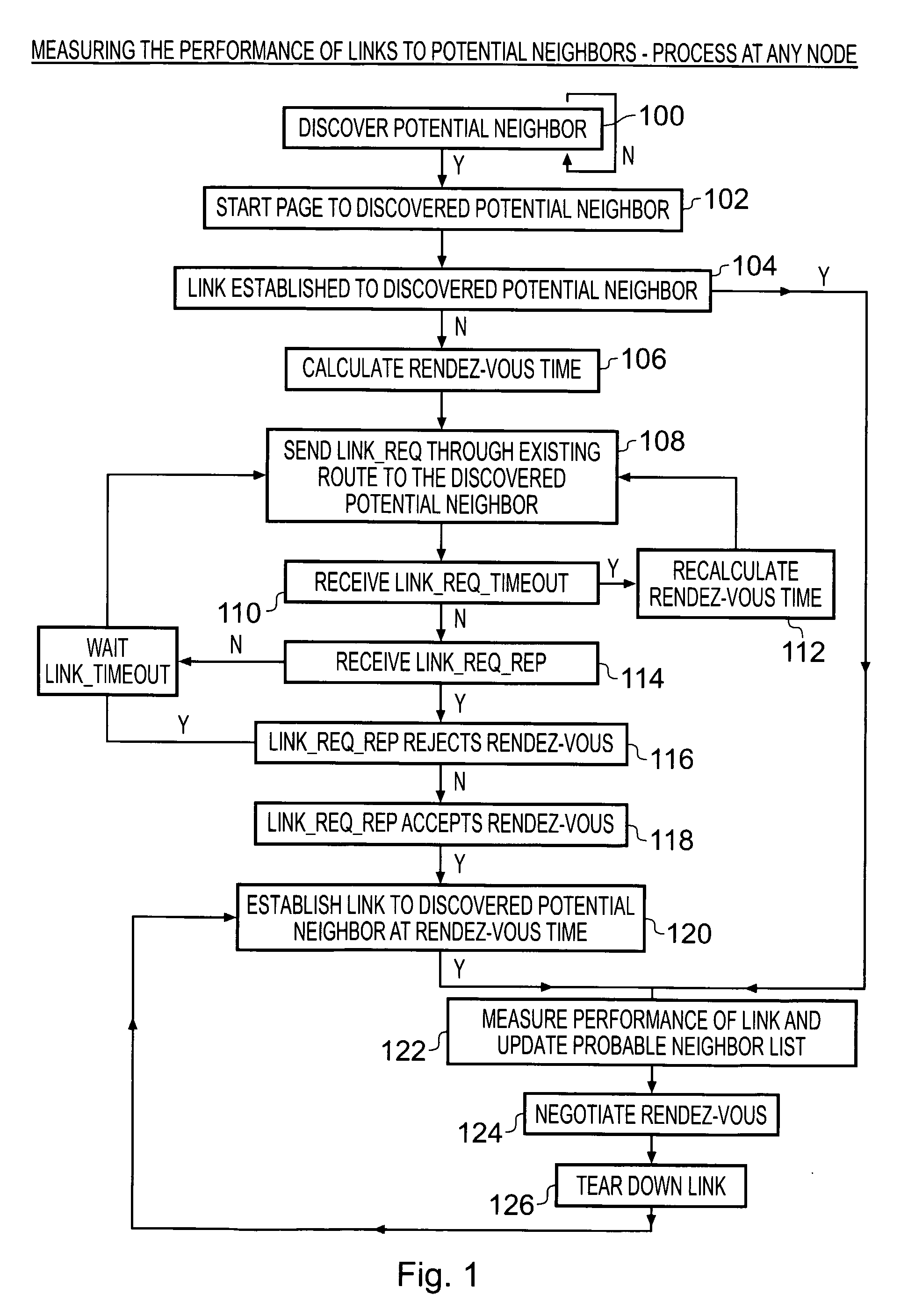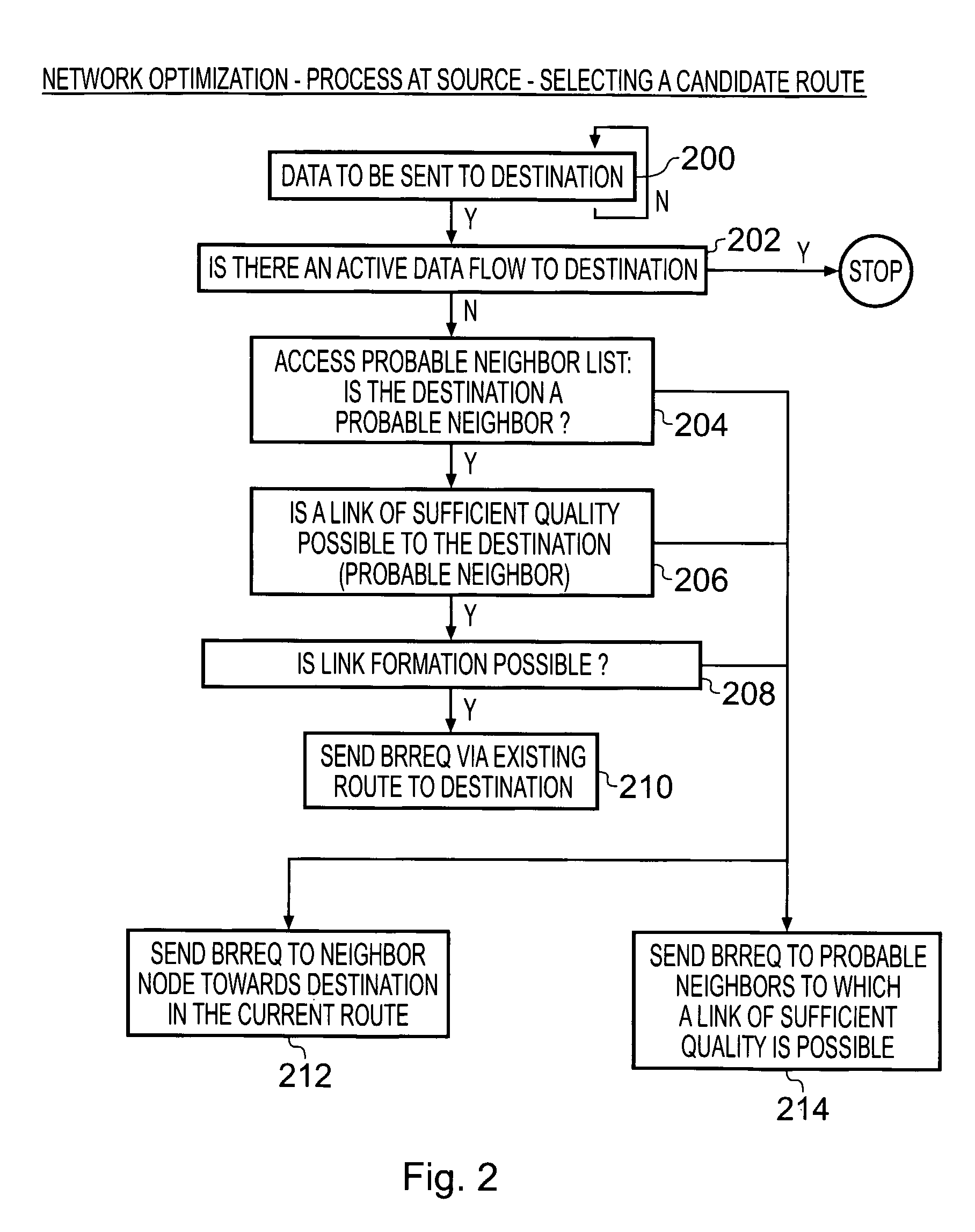Adaptive routing
a routing and adaptive technology, applied in the field of adaptive routing, can solve the problems of preventing some applications that otherwise could operate on the network, affecting the performance of the route, and two devices within the nominal communication range of their nominal communication range are not guaranteed that they establish a direct link, etc., to achieve the effect of maintaining a performance cost of the rou
- Summary
- Abstract
- Description
- Claims
- Application Information
AI Technical Summary
Benefits of technology
Problems solved by technology
Method used
Image
Examples
Embodiment Construction
[0028]The proposed network formation protocol operates in two distinct phases. In the first phase an initial network is formed and in the second phase, the network is continuously changed according the traffic needs. The change in the network is a permanent change and there is no automatic reversion to an original or controlling network topology.
[0029]The proposed network formation protocol does not describe in detail initial network formation. The initial network can be formed using any of the existing protocols. It might be advantageous to form the network in a shortest possible time in order to make the network operate as quickly as possible and also because the network would be optimized as the data begins to flow in the network.
[0030]The adaptive network formation (ANF) is handled by a protocol subsystem residing in each of the nodes participating in the Scatternet. FIG. 9 illustrates a device operable as a node in an ad-hoc network and operable to carry out each of the process...
PUM
 Login to View More
Login to View More Abstract
Description
Claims
Application Information
 Login to View More
Login to View More - R&D
- Intellectual Property
- Life Sciences
- Materials
- Tech Scout
- Unparalleled Data Quality
- Higher Quality Content
- 60% Fewer Hallucinations
Browse by: Latest US Patents, China's latest patents, Technical Efficacy Thesaurus, Application Domain, Technology Topic, Popular Technical Reports.
© 2025 PatSnap. All rights reserved.Legal|Privacy policy|Modern Slavery Act Transparency Statement|Sitemap|About US| Contact US: help@patsnap.com



